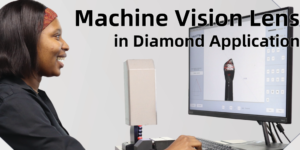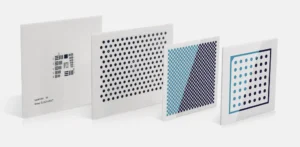After implementing vision systems in over 30 automotive plants worldwide, I’ve learned that cables are often the unsung heroes—or unexpected villains—in manufacturing reliability. If you’re struggling with inspection system downtime or inconsistent quality catches, your cable selection might be the hidden culprit.
What Cables Are Best for Automotive Vision Systems?
The best cables for automotive machine vision applications are industrial-grade high-flex cables specifically designed to withstand harsh factory conditions. For body inspection systems, shielded GigE cables with polyurethane jackets and locking connectors are ideal. Engine assembly requires USB3 or Camera Link cables with oil-resistant properties and minimum 5 million flex-cycle ratings. Paint inspection demands specialized chemical-resistant jackets, while final quality control needs extended-temperature rated cables to handle hot vehicle testing. All automotive vision cables should feature industrial-grade strain relief, 360° shielding, and UL/CSA certifications for compliance and reliability.
Continue reading to discover the specific cable requirements for each automotive manufacturing zone, learn from real-world implementation examples, and see why the right cable selection can reduce vision system downtime by up to 70%.
The Unique Challenges of Automotive Vision Applications
Automotive manufacturing presents some of the most demanding environments for machine vision cables you’ll find anywhere. Let me walk you through what makes these applications so uniquely challenging:
24/7 Production Demands
Most automotive plants run multiple shifts with minimal downtime windows. This means:
- Vision systems must maintain 99.9%+ uptime
- Cable failures can halt entire production lines
- Maintenance access is severely limited
- Replacement opportunities are few and far between
I once consulted at a plant where a $12 standard Ethernet cable failure on a critical inspection station caused over $200,000 in production losses before they could implement a proper high-flex replacement.
Extreme Environmental Conditions
Automotive manufacturing combines nearly every harsh condition imaginable:
- Metal stamping areas with extreme vibration and metal particles
- Welding zones with spatter, heat, and electromagnetic interference
- Paint shops with aggressive chemical exposure
- Final assembly with continuous movement and mechanical stress
These conditions create the perfect storm for standard cables, causing premature failures that are difficult to diagnose and often catastrophic in impact.
Regulatory and Documentation Requirements
Automotive manufacturing adheres to stringent quality standards:
- ISO/TS 16949 compliance requirements
- Full component traceability
- Documented MTBF (Mean Time Between Failures)
- Comprehensive preventative maintenance programs
Cable selections must be properly documented and justified as part of these quality systems, with appropriate certifications and testing records.
1: Body Shop Cables: Standing Up to Welding and Metal Dust
The body shop presents perhaps the harshest environment for vision system cables:
Key Challenges:
- Weld spatter and molten metal particles
- Extreme EMI from welding equipment
- Metal dust and abrasive conditions
- High ambient temperatures
- Robotic movement and continuous flexing
Best Cable Solutions:
For GigE Vision Cameras (Most Common):
- Industrial-grade Cat6A with S/FTP double shielding
- Metal-braided outer protection for weld spatter resistance
- Flame-retardant and self-extinguishing jacket materials
- Minimum IP67-rated connectors with metal housing
- Verified 10+ million flex cycle durability
For 3D Sensors and Special Applications:
- Camera Link with robotic-grade continuous flex design
- TPE (Thermoplastic Elastomer) jacketing
- Minimum 85% shield coverage with drain wire
- Specialized weld-resistant outer sleeves
Real-World Implementation:
One major European automaker was replacing camera cables in their robotic welding cells every 3-6 weeks due to weld spatter damage and flex failures. After implementing specialized weld-resistant high-flex cables with metal braiding and TPE jackets, their replacement interval extended to over 12 months—a 20x improvement in cable lifespan.
2: Paint Shop Cables: Chemical Resistance is Non-Negotiable
Paint shops combine chemical exposure with precision inspection requirements:
Key Challenges:
- Exposure to solvents, thinners, and paint compounds
- High humidity environments
- Electrostatic discharge concerns
- Temperature variations between zones
- Vibration from conveyor systems
Best Cable Solutions:
For Paint Surface Inspection:
- Chemical-resistant polyurethane or FEP jacketed cables
- Gold-plated connector contacts to prevent corrosion
- Specialized EMI shielding for electrostatically charged environments
- Cameras often use USB3 Vision interfaces for higher resolution
For Robot-Mounted Paint Inspection:
- REACH and RoHS compliant materials
- Hybrid designs with integrated power and signal
- Specialized bend radius profiles for paint robot movement patterns
- Anti-static properties to prevent dust attraction
Real-World Implementation:
A Japanese automotive manufacturer struggled with frequent cable failures in their paint defect detection system. The cables were deteriorating due to solvent exposure despite being rated for “industrial environments.” After switching to specialized chemical-resistant cables with FEP jackets and enhanced sealing at connector interfaces, their system reliability improved by 85%, and annual maintenance costs decreased by $45,000.
3: Powertrain and Engine Assembly: Precision Under Pressure
Engine and transmission assembly areas present unique challenges for vision systems:
Key Challenges:
- Oil and coolant exposure
- Precision dimensional inspection requirements
- High vibration environments
- Thermal cycling as engines are tested
- Complex camera positioning requirements
Best Cable Solutions:
For Component Verification:
- Camera Link or CoaXPress for highest precision imaging
- Oil-resistant TPE or PUR jacketing with specialized seals
- Extended temperature ratings for hot testing environments
- High strand count for superior flexibility and durability
- Specialized right-angle connectors to fit tight spaces
For Assembly Verification:
- GigE Vision cables with industrial locking connectors
- Oil-proof specifications (ASTM oils #1, #2, #3 tested)
- Resistance to coolants and lubricants
- Enhanced abrasion resistance for routing through complex assembly stations
Real-World Implementation:
A North American engine plant implemented a cylinder head inspection system with standard industrial cables. Within the first month, they experienced 7 cable failures due to oil contamination and connector issues. After upgrading to specialized oil-resistant cables with enhanced connector sealing and strain relief, they’ve operated for 3+ years without a single cable-related failure.
4: Final Assembly: Flexibility and Length Requirements
Final assembly areas typically involve the most varied vision applications:
Key Challenges:
- Extremely long cable runs across assembly lines
- Frequent reconfiguration as models change
- Mix of fixed and robot-mounted cameras
- Varying environmental conditions
- Multiple camera interfaces in the same area
Best Cable Solutions:
For Fixed Inspection Stations:
- Extended-length GigE Vision cables with signal boosters when needed
- Armored jacketing for protection against accidental damage
- Color-coded for easy identification during maintenance
- Overhead cable tray routing with appropriate support
For End-of-Line Testing:
- Hybrid cables combining power, signal, and trigger functionality
- Temperature-resistant materials for hot testing conditions
- Water and weather resistance for leak testing zones
- High-flex designs for door, hood, and trunk opening operations
Real-World Implementation:
A German premium automaker struggled with cable management in their final quality inspection stations, which required cameras to be repositioned for different vehicle models. By implementing a modular cable system with specialized quick-disconnects and high-flex sections, they reduced changeover time by 67% while improving reliability and virtually eliminating cable-related failures.
5: Quality Control and Rework: The Last Line of Defense
Final quality control stations have unique requirements:
Key Challenges:
- Need for highest reliability (last chance to catch defects)
- Varied inspection angles and positions
- Mixed lighting conditions
- Manual handling and adjustment
- Multiple interface requirements
Best Cable Solutions:
For Multipoint Inspection Stations:
- Quick-swap connectors for rapid reconfiguration
- Lightweight but durable designs for manual handling
- Enhanced strain relief at connection points
- Hybrid solutions with integrated power and lighting control
For Documentation Stations:
- Highest bandwidth cables for detailed image capture
- Support for extended camera features
- Integration with plant information systems
- Shielded trigger lines for precise timing
Real-World Implementation:
A luxury vehicle manufacturer was experiencing inconsistent results in their final surface inspection system. Investigation revealed that signal integrity issues in their camera cables were causing subtle image quality problems. After upgrading to premium shielded cables with better impedance control and connector quality, their defect detection rate improved by 32%, significantly reducing customer quality complaints.
6: Choosing the Right Cable for Each Vision Interface
Automotive applications use various camera interfaces, each with specific cable requirements:
GigE Vision (Most Common)
Best for:
- Long cable runs across assembly lines
- Network integration with plant systems
- Multiple camera deployments
- Applications requiring moderate frame rates
Cable specifications:
- Industrial Cat6A with 600MHz bandwidth
- Double shielding with 85%+ coverage
- Locking RJ45 connectors (often with M12 options)
- Oil and flame resistant jackets
- Temperature range of -40°C to +80°C
USB3 Vision
Best for:
- Higher resolution applications
- Compact camera installations
- Cost-sensitive implementations
- Applications requiring higher frame rates
Cable specifications:
- Certified USB3.2 compliance
- Maximum length of 3-5m without active extension
- Screw-locking connectors essential
- Specialized shielding for 5Gbps signal integrity
- Active optical options for longer runs
Camera Link
Best for:
- Highest precision measurements
- Engine component inspection
- Applications requiring deterministic timing
- Specialized machine vision operations
Cable specifications:
- MDR26 connectors with secure locking
- PoCL (Power over Camera Link) support when needed
- Skew-matched pairs for signal integrity
- Enhanced shielding against welding EMI
- Specialized flex properties for robotic applications
7: Maintenance and System Design Considerations
Proper cable selection is only part of the equation:
Preventative Maintenance Approaches
The best automotive plants implement:
- Regular visual inspection of cable condition
- Periodic signal quality verification
- Scheduled replacement of high-stress cables
- Documentation of cable performance and issues
- Thermal scanning to detect connection problems
Proper Installation Techniques
Ensure reliability through:
- Correct bend radius management
- Proper strain relief implementation
- Appropriate cable track selection
- Secure but not over-tightened cable ties
- Separation from high-noise sources
System Design for Serviceability
Future-proof your systems with:
- Quick-disconnect options at strategic points
- Spare cable drops pre-installed in critical areas
- Modular connection designs for rapid replacement
- Clear documentation and labeling
- Training for maintenance personnel
Conclusion: Investing in the Right Cables Pays Dividends
In the high-stakes world of automotive manufacturing, the humble camera cable can be the difference between consistent quality and costly downtime. By selecting application-specific cables designed for the unique challenges of each production area, you can dramatically improve system reliability and performance.
Remember that the true cost of a cable isn’t its purchase price—it’s the cost of failure multiplied by the probability of failure. When a $150 premium cable prevents a $250,000 line stoppage, the ROI becomes crystal clear.
Whether you’re designing a new vision system or troubleshooting an existing one, paying attention to these cable selection principles will help ensure your automotive manufacturing vision systems deliver the reliability and performance your production demands.










